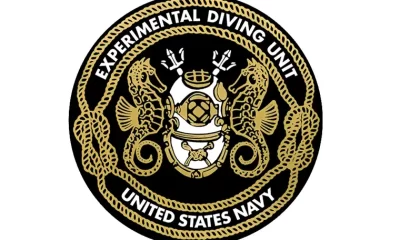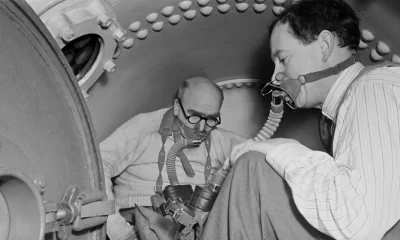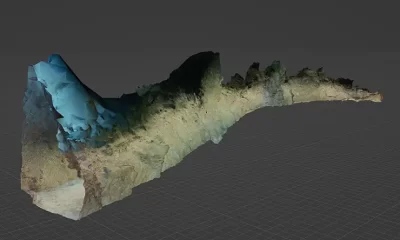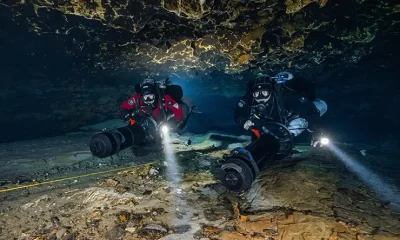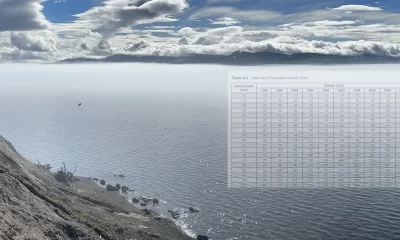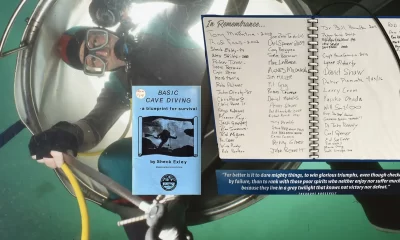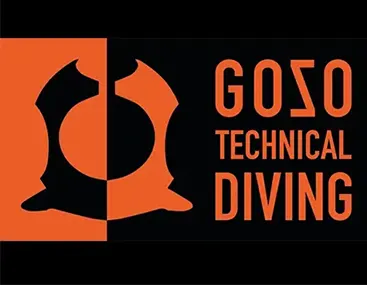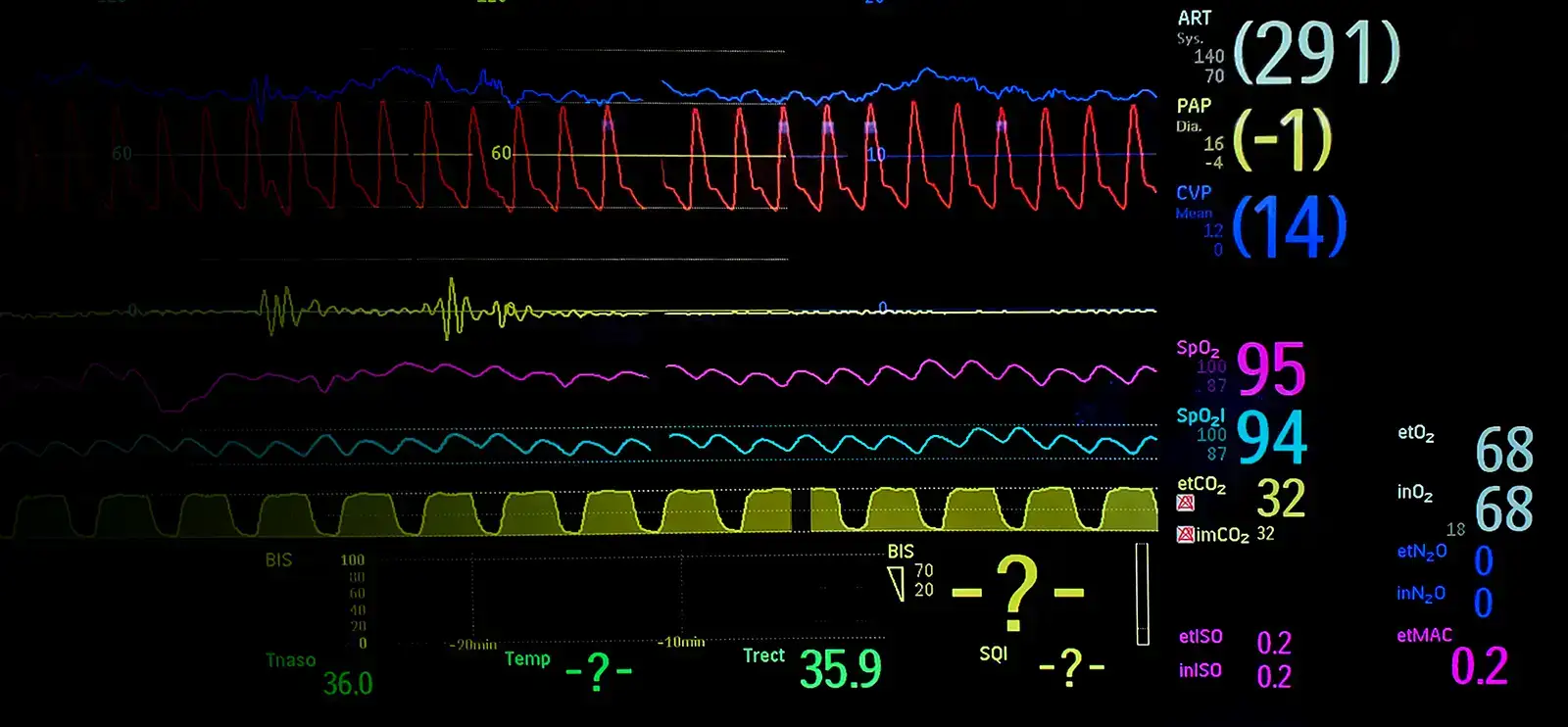
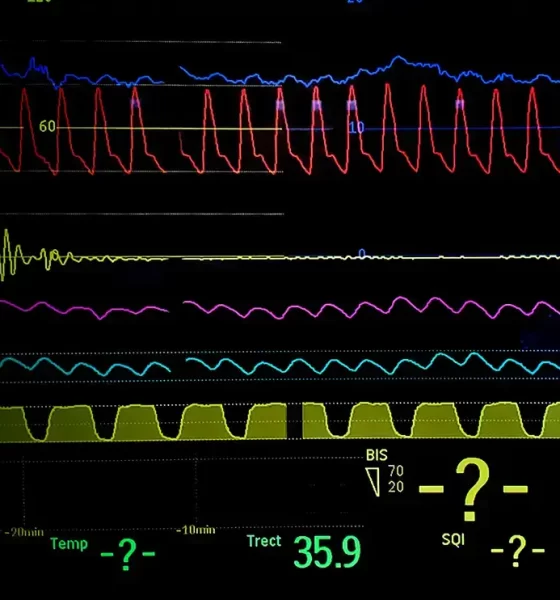
Diving Medicine
Will End-tidal CO2 Monitoring Become a Reality in Diving?
By Ashley Stewart
CO2 is a dangerous gas, which is why monitoring rebreather CO2 levels is important. VR Technology’s Kevin Gurr introduced the first gaseous CO2 sensor in the Sentinel in 2008, followed by AP Diving in 2014. Today, five manufacturers offer CO2 sensors, but all of them measure CO2 levels on the inhale side of the rebreather loop, not in the diver themselves. That, as InDEPTH reporter Ashley Stewart explains, requires End-Tidal monitoring, which is used in anesthesiology. However, adapting what has been called the ‘Holy Grail’ of CO2 monitoring to rebreathers is no easy feat.
Carbon dioxide is perhaps the most dangerous gas we encounter in diving.
A byproduct of metabolism, our bodies generate carbon dioxide (CO2) when we convert food into energy. Normally, our blood carries CO2 to our lungs, eliminating the gas through exhalation. But sometimes this gas can build up, either when it’s contained in the gas we inhale or when we’re unable to eliminate it through respiration.
This causes all kinds of problems in diving. Not only can CO2 itself become toxic, leading to symptoms including unconsciousness, but it also increases the risk of pretty much everything else we want to avoid in diving. It’s about 20 times more narcotic than nitrogen, increasing the risk of narcosis, and increases the risk of oxygen toxicity.
In rebreather diving, we have to worry about two potential sources of CO2. Faulty or overused absorbent scrubbers can introduce CO2 into the gas we breathe in, and we can build up excessive CO2 through increased work of breathing, such as when the gasses we breathe become more dense as pressure increases from depth. In the latter case, it is failure to breathe enough to eliminate the CO2 produced in the body which is the problem; not inhaled CO2 due to a faulty scrubber.
Rebreather manufacturers have been trying to solve this problem. AP Diving, XCCR, Lungfish and others have released tools to approximate how well the scrubber is eliminating CO2 from the gas we inhale. A company called Open Safety Equipment Limited claims to have manufactured the “first and only rebreathers with end of tidal CO2 monitoring,” in 2009, in 2009 but there have been doubts about the company’s technology and it is not currently shipping the devices to the sport market.
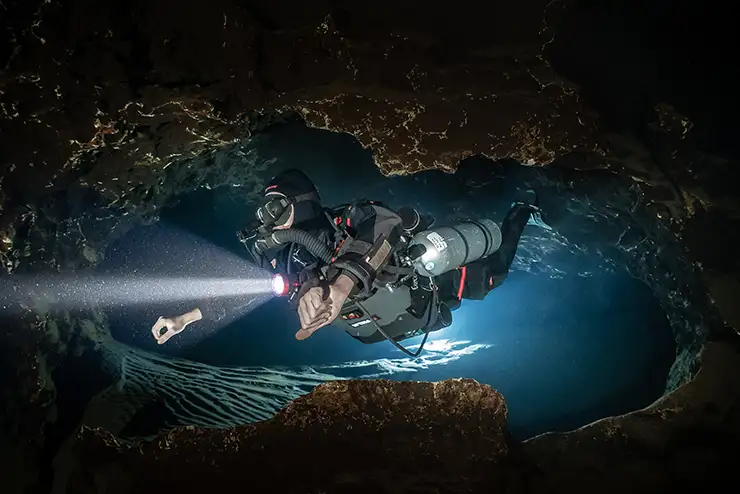
The ‘Holy Grail’ for CO2 monitoring
As diving physician and anesthesiologist Simon Mitchell discussed at his Rebreather Forum 4 (RF4) presentation in April 2023, end-tidal CO2 monitoring, used in anesthesiology, would be the “Holy Grail” for CO2 monitoring in diving because it could both detect the presence of CO2 in the gas we inhale, alerting us to a faulty scrubber, and detect any CO2 buildup in the body by measuring it in the gas we exhale.
In the year since Mitchell’s presentation, the state of the art in diving CO2 monitoring hasn’t advanced much. Significant challenges remain in making such a technology work in the humid environment of a rebreather, where gas, power, and space are inherently limited.
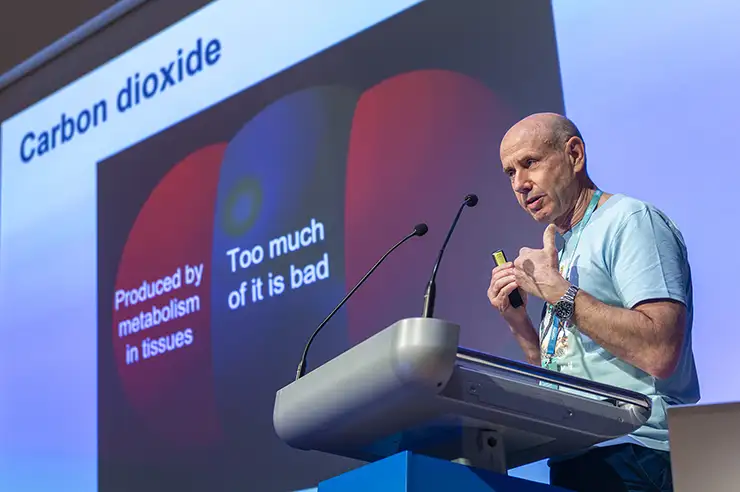
There are solutions already on the market for detecting the first way we might encounter CO2 in diving. Rebreathers use a canister containing soda lime, called a scrubber, to remove CO2 from the gas we exhale, and then the rebreather adds oxygen to that scrubbed gas so we can inhale and reuse it. But there are limits to how much CO2 a scrubber can absorb, and it can be ineffective at removing the gas for reasons including if the soda lime is overused, overfilled, or underfilled, or isn’t assembled properly.
AP Diving has a CO2 sensor to detect the presence of the gas on the inhalation side of the rebreather. The sensor uses electronics to measure the absorption of infrared light, which changes depending on the makeup of the gas. The challenge for this technology is that water vapor has a similar effect on the infrared absorbance as CO2, and rebreathers have a lot of humidity. AP Diving’s manual states the company has tried to mitigate this by using a drying cartridge between the protective technical membranes to prevent the interference of water vapor on the readings.
Lungfish also has a CO2 sensor in its Orca V6 rebreather, which it claims can distinguish between CO2 and water vapor or other gasses in the loop. Lungfish told InDEPTH the basis of its CO2 monitor is an optical sensor, but declined to specify further citing competitive concerns.
Some rebreather manufacturers are also using a device called a “temp stick” to monitor the CO2 scrubber. Temp sticks don’t measure CO2 but they predict scrubber depletion, breakthrough, and remaining capacity by measuring the exothermic reaction between CO2 and soda lime. AP Diving’s Inspiration and rEvo rebreathers have versions of temp sticks, and a study of their performance by Mitchell and others found they were effective at providing a timely warning of significant CO2 breakthrough. However, temp sticks can’t detect incorrect installation of the scrubber canister.
But CO2 buildup can occur even when a scrubber is working properly, and inhale-side CO2 monitors don’t measure CO2 buildup in a diver’s body, which can be just as dangerous.
For that, you need to monitor CO2 levels inside the divers themselves.
How it works

Anesthesiologists have worked out how to do this reliably at the surface through a practice called capnography. To determine how much CO2 is building up in the body, they want to know the concentration of CO2 in the blood that’s going through the artery, or the blood vessel that carries oxygen-rich blood from the lungs to the rest of the body. This arterial blood shows how effectively the lungs are removing carbon dioxide from our blood when we exhale.
We can measure arterial blood directly through a blood test, but the gas we expel from the alveoli of the lungs gives us a tool to measure CO2 buildup in real-time because the pressure of CO2 in the alveolar gas tracks with the pressure of CO2 in the arterial blood. By measuring the alveolar gas, we can determine how much CO2 is in the body with a reasonable level of accuracy.
But it’s not as simple as merely testing the CO2 in a divers’ exhalation.
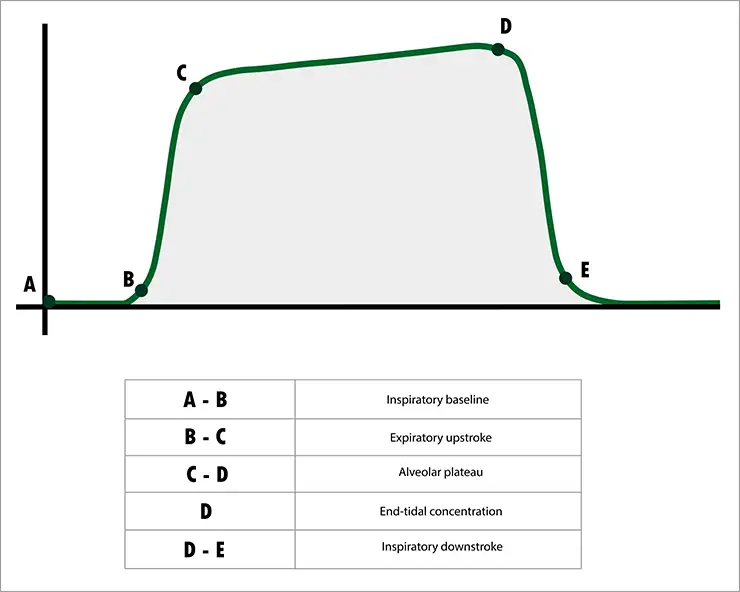
When we exhale, the mouth and all the passages down to the alveoli also contain the gas we’ve just inhaled. In order to measure alveolar gas, we need to wait until the exhalation has passed out of the mouth before we measure the pressure of CO2 to make sure it isn’t mixing with freshly inhaled gas. So, we wait to measure the very end of the exhalation to measure the alveolar gas and approximate the pressure of CO2 in the arterial blood.
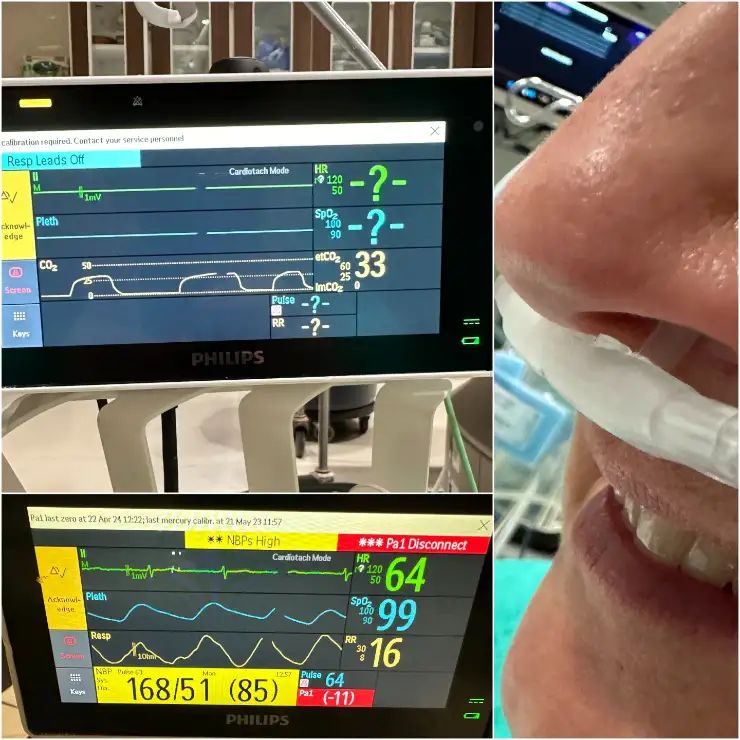
This is called end-tidal CO2 monitoring, and in surgical settings, anesthesiologists measure through a thin sampling line that goes from the patient’s nose or mouth to a monitor that analyzes the inhaled and exhaled gasses with a fast-response infrared analyzer and produces a waveform. During inhalation, we expect the CO2 to be 0 because we’re inhaling fresh gas without CO2, and the end of the wavelength during exhalation shows the end-tidal CO2.
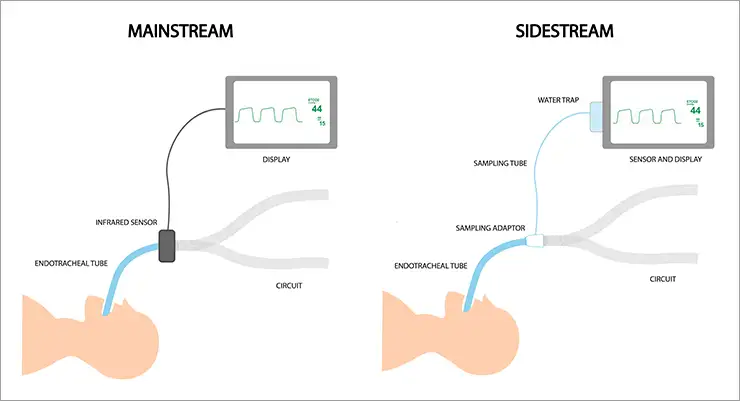
As Mitchell said during his RF4 talk, this could give us the best of both worlds in a rebreather. During inhalation, an end-tidal CO2 monitoring device could tell us both whether our scrubber is working, and during exhalation the device would tell us whether we are retaining CO2.
“End-tidal CO2 monitoring and capnography is like the holy grail,” Mitchell said. “Imagine, if we had that in every diver swimming around with a rebreather in the world, the gold mine of physiological information we would have about CO2 and what it’s doing to us and how it’s affecting our dives.”
Development challenges
There are many challenges to making end-tidal CO2 monitoring a reality in diving. Manufacturers would have to take the sample from the mouth to get the inhaled and exhaled gas, either with the analyzer in the mouthpiece itself or like in the operating room, with a sample from the mouthpiece to a small tube to an analyzer elsewhere on the rebreather.
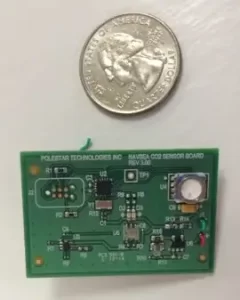
While there are analyzers small enough to fit into a mouthpiece, Mitchell said they would not only add bulk but an infrared sensor would struggle with humidity as the mouthpiece is perhaps the most humid place on the rebreather.
If manufacturers add the analyzer elsewhere on the rebreather, Mitchell said that could cause a loss of gas, and it would likely require a lot of power to run a pump capable of pulling dense gas through a small tube. Gas, power, and space are scarce in rebreather diving.
Most importantly, there’s no margin for error. “For End-tidal monitoring to be useful and safe and allow us to base decisions,” Mitchell said, “it has to be accurate.”

Arne Sieber, a biomedical engineer notable for developing solid-state oxygen sensors for use in diving, in 2011 published research after building and testing a combined oxygen and CO2 solid-state sensor system into the mouthpiece of a rebreather. The device was humidity-resistant and produced an end-tidal CO2 waveform that appeared accurate, but had issues including non-linearity in oxygen sensors, high-heat, and power consumption. Sieber is now working on novel rebreather solutions with Halcyon.
Sieber told InDEPTH the biggest challenge to making end-tidal CO2 monitoring a reality in diving is cost. Sieber’s research between 2008 and 2011 was funded by research projects and the results were purely academic. The sensors were expensive to produce, and it would require substantial funding to take them from the feasibility phase to low-cost serial production, he said.
“From a business point of view, such an investment only makes sense if there is a large market need,” Sieber said. “Diving is not the right market, as there are just too few divers.” Sieber’s team looked into using the sensors for detection of female ovulation, as the hormone progesterone induces slight hyperventilation causing a small but measurable drop in end-tidal CO2, but there were already cheaper solutions on the market.
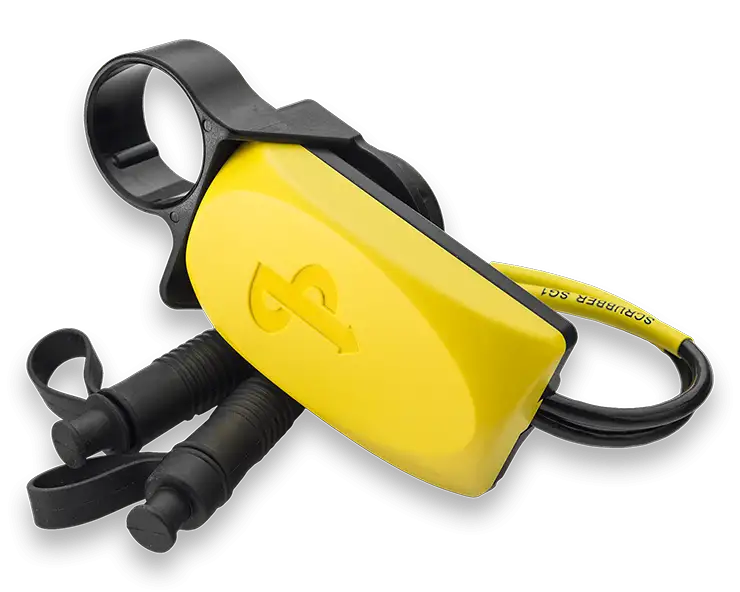
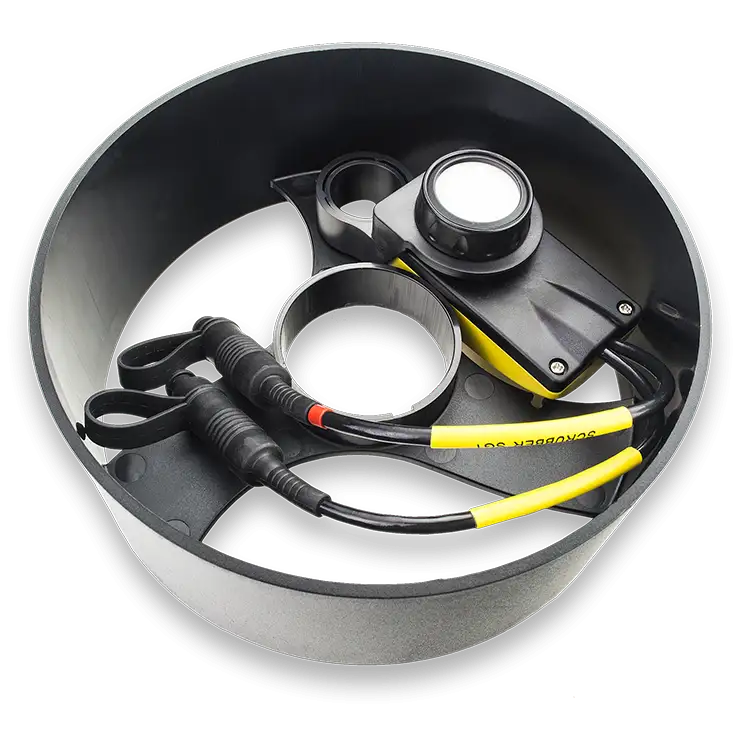
Additional challenges, Sieber said, include the size and weight of the sensors, as well as their speed. CO2 sensors currently used in diving have a slow response time, and a CO2 sensor that can measure the content of inhaled and exhaled gas would need to be much faster.
Open Safety Equipment Ltd. lists for sale on its website a $14,000 “iCCR” monitor it claims is the “first to measure end of exhale CO2 reliably on a diver.” The company’s website claims it developed the “first and only rebreathers with end of tidal CO2 monitoring” as an innovation in 2009. The company’s website lists the device as out of stock.
“No specific date can be given for any individual iCCR order shipment at this time,” the company’s website states.
Mitchell plans to publish a paper on end-tidal CO2 monitoring in the forthcoming proceedings from the Rebreather Forum 4. ###
Here is the RF4 Consensus Statement regarding CO2 Monitoring
End-Tidal CO2 Monitoring: The forum identifies as a research priority/goal the development of capnography and accurate end-tidal CO2 monitoring for rebreathers.
DIVE DEEPER
RF4: Developments in CO2 monitoring by Dr. Simon Mitchell
Alert Diver: Do You Know What You’re Breathing By Michael Menduno
InDEPTH: The Secrets of Scrubbers By Jeffrey Bozanic PhD
InDEPTH: Too Much to Absorb: What You Need to Know About Your Scrubber by Reilly Fogarty (2020)
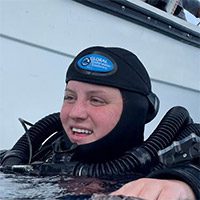
Investigative Reporter Ashley Stewart is a Seattle-based journalist, tech diver, and an owner of Eight Diving. Ashley started diving with Global Underwater Explorers and writing for InDEPTH in 2021. She is a GUE Tech 2 and CCR1 diver and on her way to becoming an instructor. In her day job, Ashley is an investigative journalist reporting on technology companies. She can be reached at: [email protected]


















